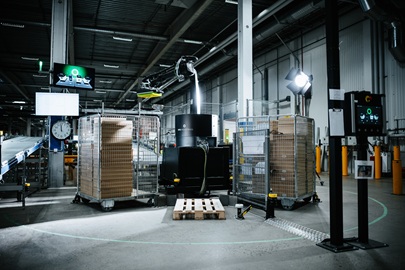Rebl Industries, a Swedish robotics company, has recently entered into significant agreements with major global brands H&M and IKEA to implement its robots-as-a-service (RaaS) solutions in warehouse operations. This development underscores a broader trend toward automation in various industries, particularly within the fashion and retail sectors, where efficiency and speed are crucial. For small and medium-sized businesses (SMBs), understanding these advancements and exploring automation options can yield substantial benefits.
As workloads increase and consumer expectations evolve, companies are seeking innovative approaches to streamline operations. Rebl’s AI-powered robots have been a part of this evolution, automating tasks like sorting and palletizing. The company notes that its robots have been successfully deployed in real production environments, allowing warehouse staff to shift from repetitive tasks to more strategic roles. These robots are offered on a performance basis, eliminating the need for significant upfront investment, which can help SMBs mitigate financial risk while integrating automation into their workflows.
To understand how SMBs can implement automation similar to Rebl’s, it is essential to break it down into manageable, actionable steps. First, organizations should conduct a thorough analysis of their current processes to identify repetitive and time-consuming tasks that can benefit from automation. This analysis lays the groundwork for understanding which operations can be more efficient if supported by AI tools and automation software like Make or Zapier.
Once you have identified the tasks suited for automation, the next step is selecting appropriate tools. Platforms like Make or Zapier offer the ability to connect various applications and automate workflows without extensive coding knowledge. For example, an e-commerce company might utilize Zapier to automate order processing by integrating its sales platform with a shipping service. By setting triggers that automatically send order data to the shipping provider as soon as a sale is made, the business can reduce the time spent on manual entry and minimize errors.
After establishing the workflow, it’s crucial to implement the automation gradually. Start with a pilot program focused on the most critical tasks that can be automated. This allows businesses to evaluate the results and refine the process before a full-scale rollout. During this phase, it’s essential to gather feedback from employees who interact with the automation tools. Their insights will inform adjustments and help alleviate any resistance to change.
Employee training is another critical component. Automation may streamline processes, but ensuring that staff members are comfortable with the new technologies is equally important. Providing ongoing education and resources will empower employees, enhancing their productivity and helping them make the most of the newly automated systems.
Monitoring the performance of automated processes is vital for assessing ROI. SMBs should establish clear metrics to gauge efficiency, such as time saved, error rates, and overall productivity improvements. Regular reviews can highlight areas for further optimization, ensuring that the automation effort continues to deliver value.
However, while the benefits of automation are significant, companies must also be wary of potential risks. Implementing automation can create disruption if not managed properly, thus clear communication with stakeholders is paramount. Additionally, the reliance on technology means that systems must be regularly maintained and updated to avoid potential downtimes or security breaches.
In conclusion, Rebl Industries’ partnership with H&M and IKEA illustrates the growing trend of leveraging robotics in warehouse operations. For SMBs looking to adopt similar strategies, the path to automation begins with assessing internal processes, selecting the right tools, and gradually implementing changes. By focusing on employee involvement and ongoing optimization, businesses can successfully navigate the automation landscape, ultimately leading to enhanced efficiency and reduced operational costs.
FlowMind AI Insight: As industries increasingly embrace automation, SMBs stand to benefit immensely by leveraging AI tools to streamline workflows. A strategic and well-planned automation initiative can enhance operational efficiency while allowing teams to focus on growth and innovation.
Original article: Read here
2025-08-27 15:25:00

